What is Mirepoix? How to Make Mirepoix
Mirepoix is an essential base to so many delicious dishes. Made with just four simple aromatic ingredients, mirepoix can easily elevate your entree by adding an incredible amount of flavor. All cooks should be able to whip up this easy base, so learn how to with these easy steps!
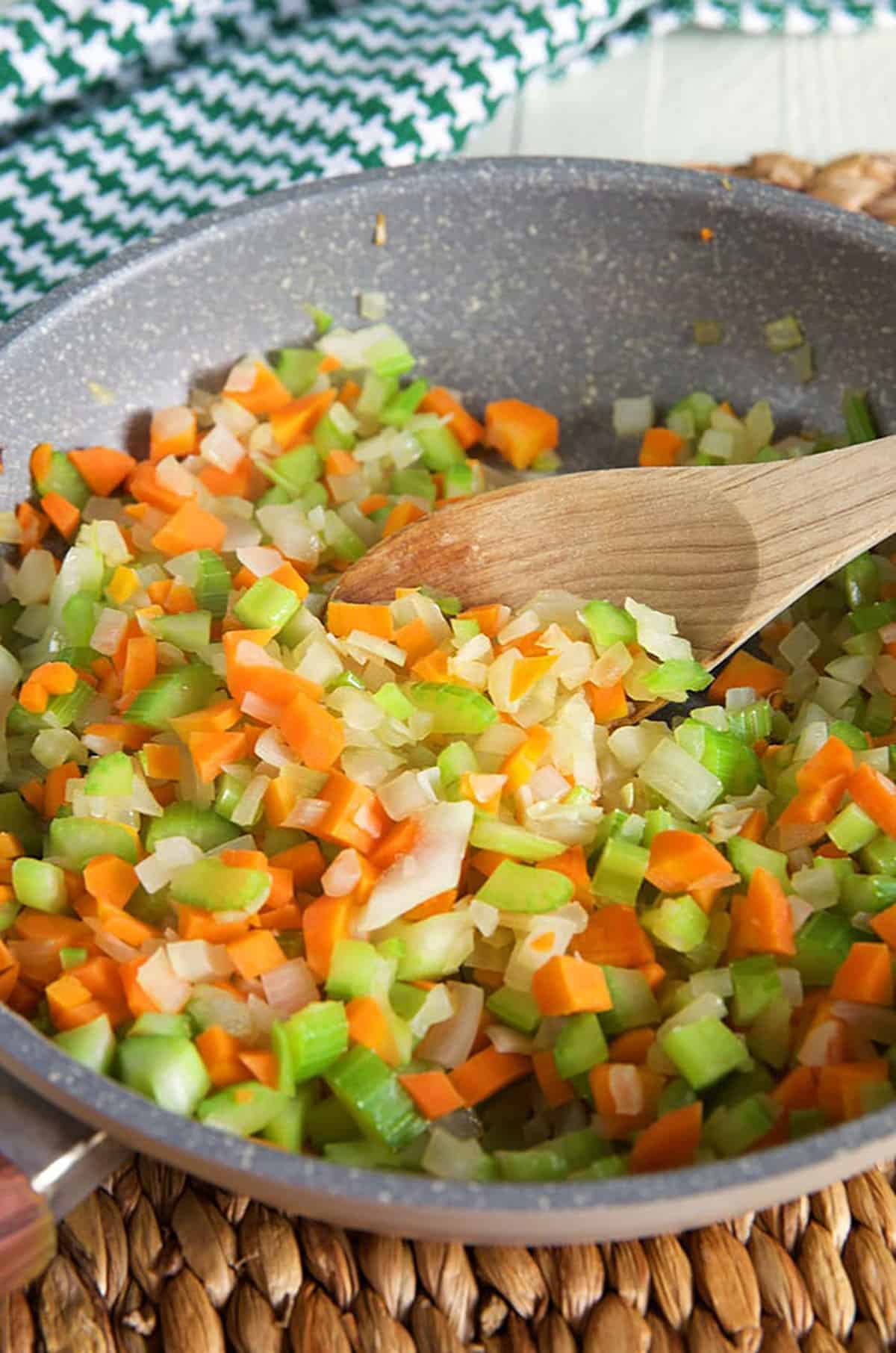
Mirepoix
Onions, celery, carrots, and butter or olive oil – That’s all it takes to make the perfect mirepoix! So, why is something so simple SO important in the kitchen? The gentle yet noticeable flavor that mirepoix gives to soups, stews, and similar dishes is just undeniably amazing.
The origin of this aromatic base is truly fascinating. Mirepoix was created in 18th century France, and named after Duke de Mirepoix, Charles Pierre Gaston Francois De Levis. However, this duke wasn’t recognized for his culinary abilities…
Rather, it’s said that the king of France at the time, Louis XV, kept the duke around because he was fond of his wife! So, in the midst of a crazy aristocratic adultery scandal, mirepoix was created.
Despite the scandal, the duke surprised everyone when his chef de cuisine created and shared the recipe for this simple aromatic base that’s now used in an abundance of French recipes. The chef named the base after his duke, and the rest is history!
Mirepoix is an essential part of French cuisine that can be used in all sorts of ways. In fact, I don’t think any wet French dish (soups, stews, etc.) would be complete without a mirepoix base.
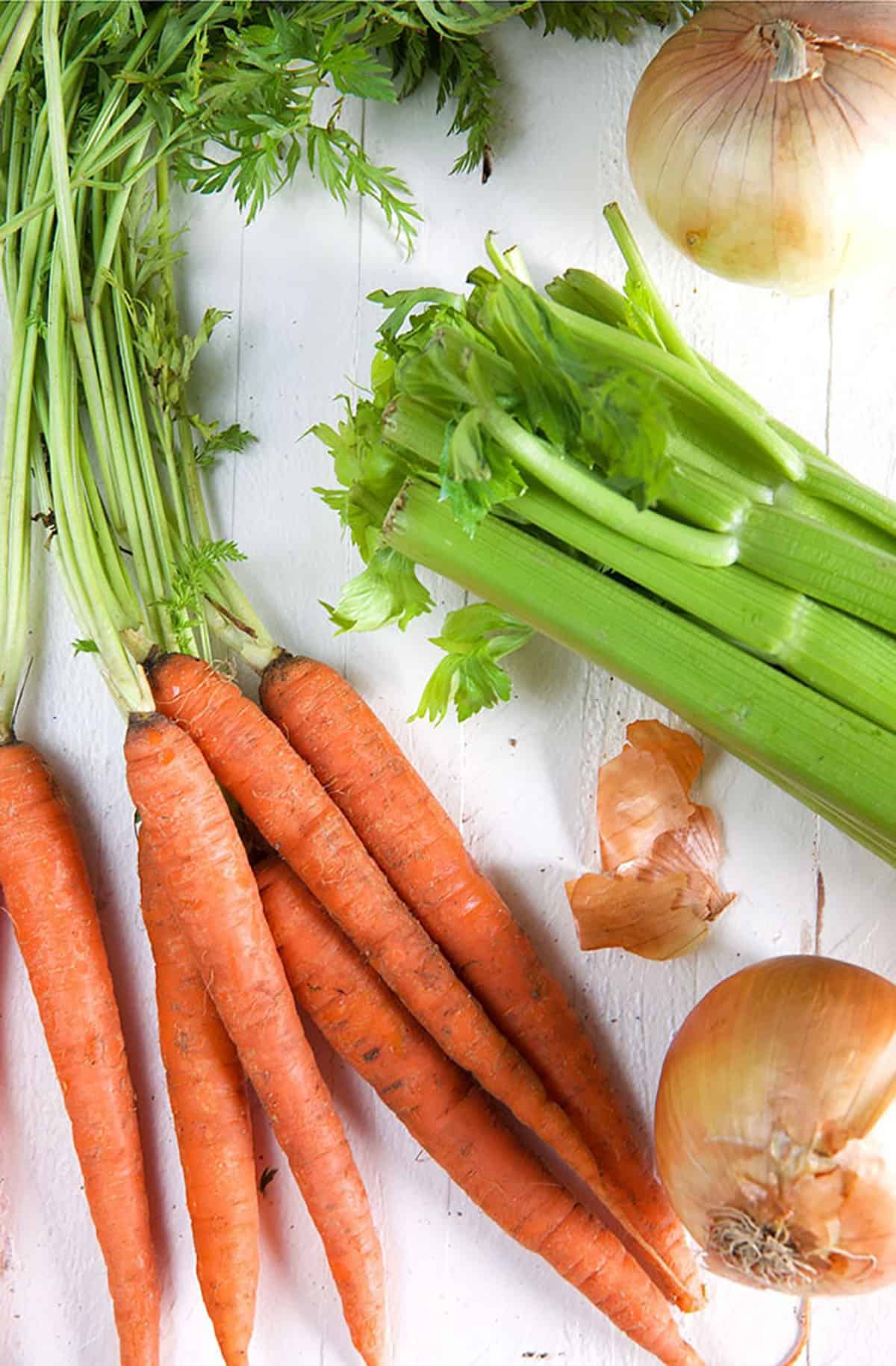
How To Make Mirepoix
Typically, when the term “French cuisine” is used, that could mean a lot of intricate steps and ingredients that are difficult to pronounce. Well, have no fear with this recipe! You don’t need to be a professional chef to make this classic base.
- Start by preparing the vegetables. Scrub and rinse the celery and carrots. Don’t rush through this step! You want these ingredients to be perfectly clean for your mirepoix.
- Chop the vegetables. If your recipe requires a sauté or frying method, you’ll want a small dice, approximately 1/4 inch. For soups or stews, a medium dice, approximately 1/2 inch, works best.
- Prepare the skillet. Heat the butter or oil in a skillet or dutch oven over medium heat. If you’re using butter, be cautious to not heat it too long, as you don’t want it to brown.
- Cook the vegetables. Add the freshly chopped vegetables to the heated skillet. While cooking, stir frequently, until the vegetables are softened.
- Enjoy! Use your delicious mirepoix as a flavorful base in your favorite recipe.
A tip – Don’t overcook the vegetables. Adjust the heat accordingly to prevent browning or caramelization. Mirepoix is a method of “sweating” the vegetables, which coaxes out the natural sweetness without caramelizing them.
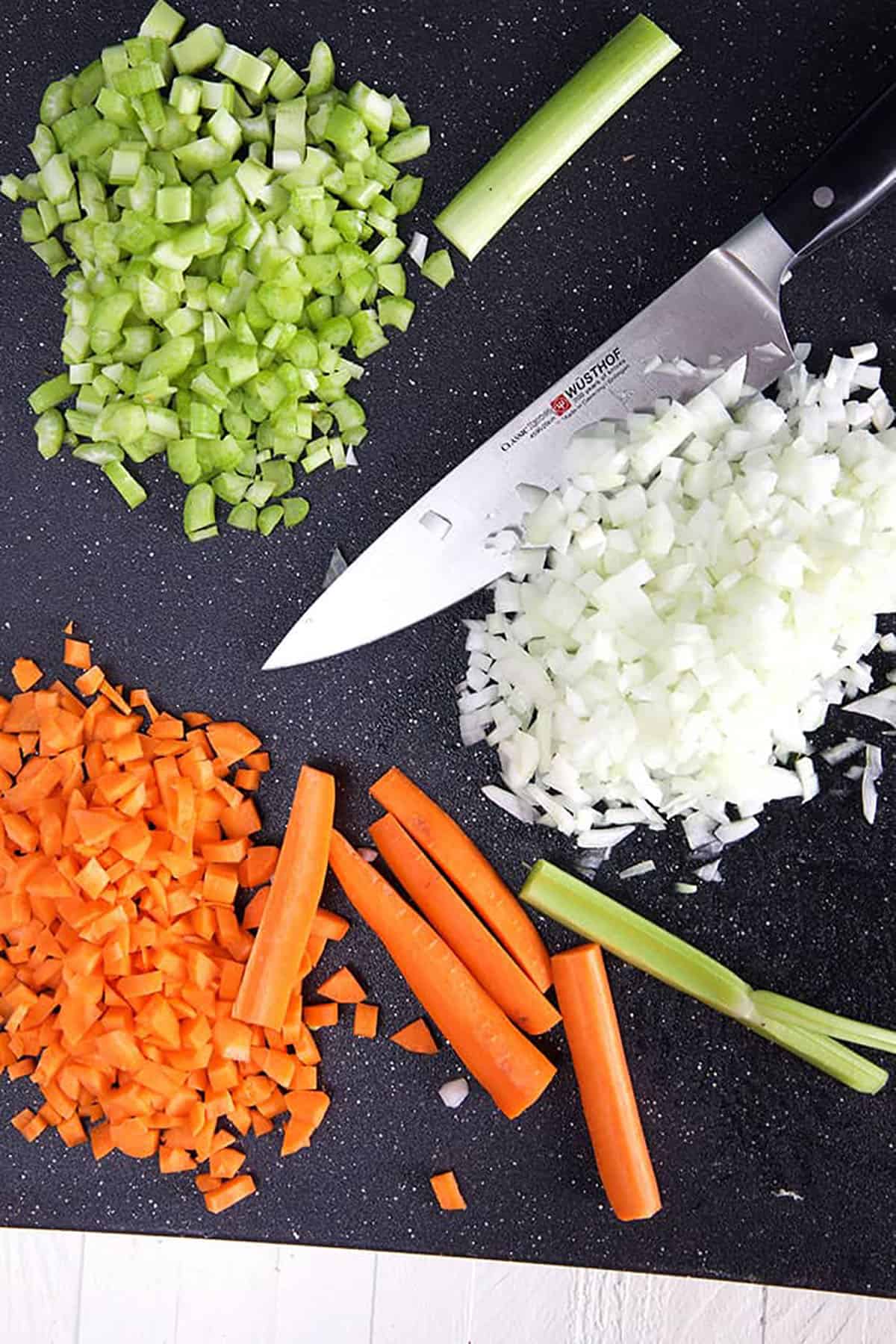
How To Freeze It
I love keeping mirepoix in my freezer, that way it’s already there when I need it. All you need to do is add the frozen mirepoix to your cooking dish, heat it up until it’s simmering, then add your other ingredients for whatever you’re making. Again – I highly recommend freezing mirepoix! It’s a great way to save time when you’re making dinner.
Mirepoix vs. Soffritto
Cuisines all around the world have their own aromatic bases. While the French created mirepoix, the Italians created soffritto. While both recipes call for onions, celery and carrots, soffritto is traditionally also made with garlic and parsley. Additionally, the ratio for mirepoix is usually 2 parts onion, 1 part carrot and 1 part celery. There is no set ratio for soffritto.
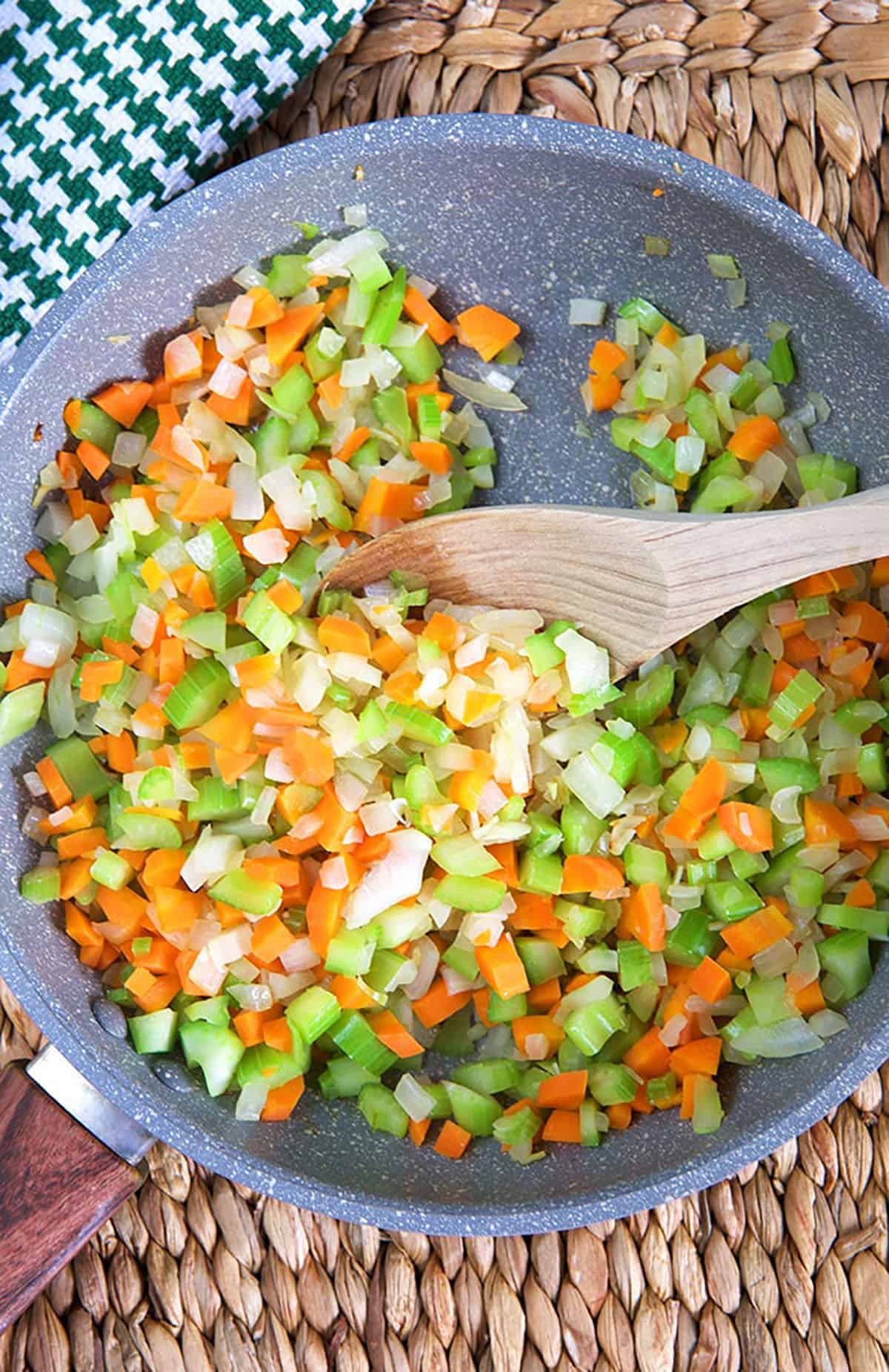
Is mirepoix similar to the Cajun Trinity?
The main similarity between mirepoix and the Cajun Trinity is that they’re both aromatic bases that require onion and celery. However, instead of using carrots, the Cajun Trinity (also known as the Holy Trinity) calls for bell pepper.
How To Use Mirepoix
The options are pretty limitless, but one of my favorites is rotisserie chicken noodle soup. It’s a perfect example of a soup that can be made even quicker with some frozen mirepoix on hand!
We also use it for this creamy Chicken Fricassee and this amazing Maryland Crab Soup!
For more easy recipes, follow us on Instagram and Facebook.
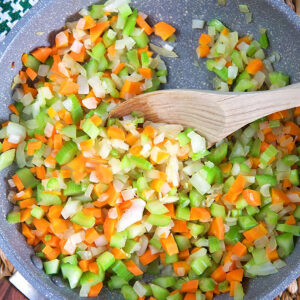
Get the Recipe: Mirepoix Recipe
Ingredients
- 2 cups chopped onions
- 1 1/2 cups chopped celery
- 1 1/2 cups chopped carrots
- 2 teaspoons butter or olive oil
Equipment
- saute pan
Instructions
- Scrub and rinse well the celery and carrots.
- Chop the vegetables. For recipes requiring a saute or frying method, you’ll want a small dice (approximately 1/4 inch). For soups or stews, a medium dice (approximately 1/2 inch) works best.
- Heat the butter or oil in a skillet or dutch oven over medium heat.
- Add the vegetables and cook, stirring frequently, until the vegetables are softened.
- Use in your favorite recipe.

8 Comments on “What is Mirepoix? How to Make Mirepoix”
Regarding freezing mirepoix, do you freeze it raw, or cooked?
We freeze it raw but you can freeze it cooked, as well. I prefer it raw and feel like it’s less likely to break down when you cook it.
My husband will not eat cooked carrots. Is this any good without the carrots or is there a substitute for them.?
Thanks
You can skip them but they do add a little sweetness. You could use butternut squash or sweet potato.
Thank you for your simple, but complete, definition of mirepoix. I was unaware of where it got its name. It truly is the way to begin flavoring a soup.
It really is! Thank you for appreciating the article….a lot of people asked so I thought I’d explain it in better detail.
What I love about freezing it is even a “boxed” stock, along with the mix and a little pasta makes an awesome soup fast. I love soup year round but don’t always have time to make from scratch and a really good boxed stock (buy the best if you cannot make it yourself) goes a long way with your mirepoix.
You should definitely check out my recipe for homemade beef stock, too! https://thesuburbansoapbox.com/best-beef-stock/